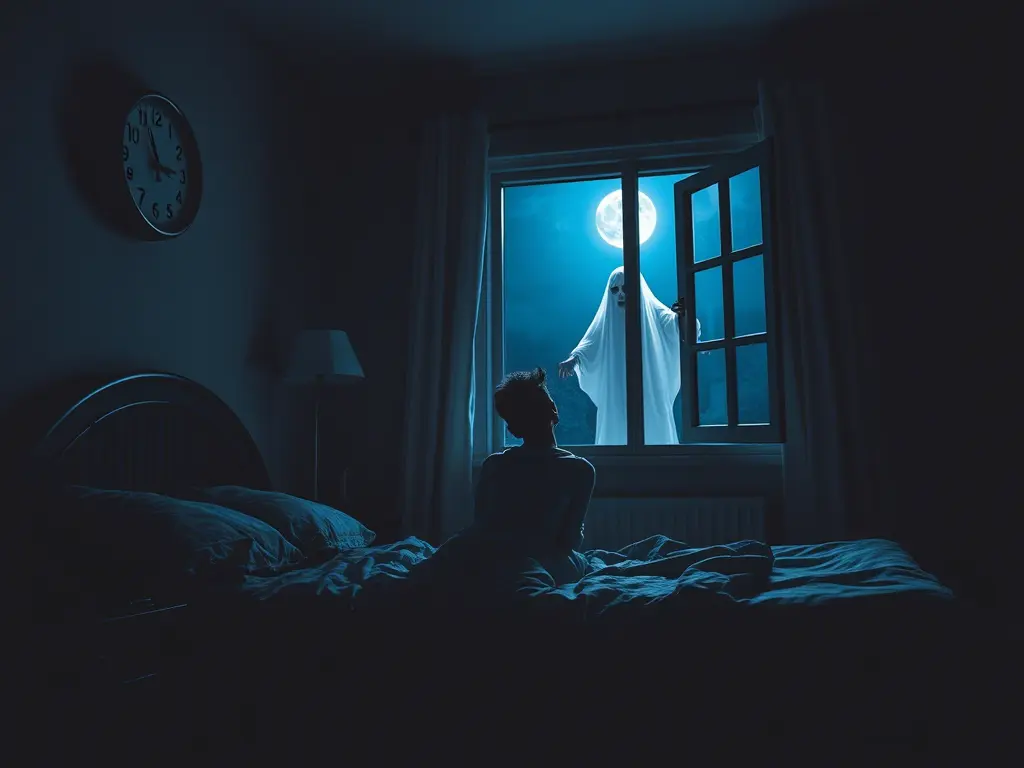A cold breeze slips through the door crack. The clock chimes three with a weary echo. Somewhere, a chilling sensation creeps up your spine—like something is watching from the darkness.
No one can say for sure why, but 3 a.m. has long been whispered about as “the devil’s hour.” That fragile moment is more than superstition—it’s where spirituality, biology, and deeply rooted cultural anxieties quietly converge.
A window into the unseen
Across many cultures—from Asia to Europe—people believe that 3 a.m. marks the time when “yin peaks and yang wanes,” a moment when life energy retreats and things from the shadows may cross over.
In Christianity, theologians call it The Devil’s Hour—the dark counterpoint to 3 p.m., the sacred hour of Christ’s death. Some medieval texts even describe 3 a.m. as the hour when demons mock God’s sacrifice by inverting what is holy.

Folklore, too, is rich with whispered stories handed down through generations: tales of loved ones taking their final breath in the early hours, of infants crying in abandoned houses before dawn, of “spirit hours” when the veil is thinnest. In my village in Fengdu, Chongqing, China, people believe that 3 a.m. is when lost souls can’t find their way back to the underworld—so they leave a bowl of salt at the doorstep to ward them off.
The trap of biology and the mind
I was curious about this too, and when I looked into it, I found that Professor Mark Blagrove — he’s the director of the Sleep Lab at Swansea University — pointed out that the transition between wakefulness and sleep often triggers brief hallucinations in many adults, like fleeting images or unexplained sounds. In fact, some surveys suggest that up to 80% of people have experienced the hypnagogic state — a term researchers use to describe that in-between zone where your brain drifts between dreaming and waking, and everything starts to feel strange and distorted.
This is also the peak window for sleep paralysis. According to the Journal of Psychological Medicine, 1 in 5 people will experience it at least once, and 70% of those describe “someone else in the room” or “a dark figure pressing on the chest.”
I’ve never seen a ghost, and I’m not even sure I’ve had sleep paralysis. But I remember staying up too late watching Douyin—like that night I binged ghost-sighting videos from old Chinese temples. Douyin fed me a whole playlist from users in Chongqing, with eerie sounds and flickering shadows. My eyes burned from the blue light, my stomach growled at midnight because I forgot to eat while scrolling. Everything gets weirdly quiet at that hour. Even a creak or a breeze can make your heart stutter—though logic insists it’s nothing.
That feeling—mixed with exhaustion, a semi-dreaming brain, and an empty room—is enough to make the ordinary feel… not so ordinary anymore.
In truth, the human body hits rock bottom around this time: lowest body temperature, slowed heart rate, dropped blood pressure, and a slight rise in stress hormones. In that fragile state, even tiny stimuli—the hum of a fan, the whisper of a car passing, the soft groan of wooden floors—get amplified. And the brain, craving an explanation, fills in the blanks with fear.
3 a.m. isn’t just a time—it’s a state
A strange liminal zone where the material and the mental blur together.
Where a breeze might feel like a ghost, a dream might sound like a warning, and fear suddenly takes a physical form.
You might not believe in ghosts.
But if one night you wake up to the sound of rustling by your window—
and then see a figure in the mirror that isn’t you—
it gets a lot harder to believe it’s just coincidence.
